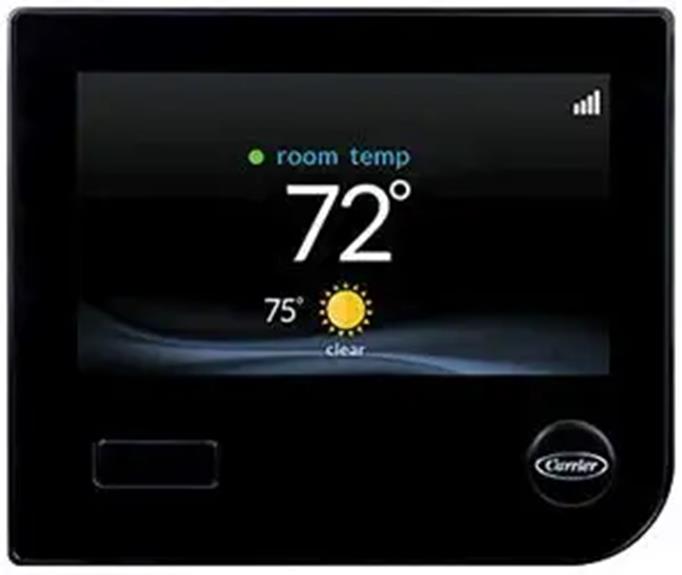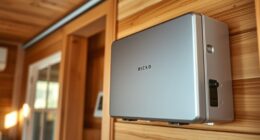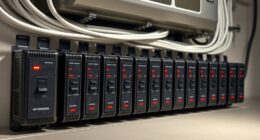Introducing our handbook on vital upkeep for commercial property heat pumps.
At first glance, these complex systems may seem like a mystery, but fear not! We’re here to demystify the process and help you keep your heat pumps running smoothly.
Regular maintenance is crucial to ensure optimal performance and longevity. In this article, we’ll walk you through the necessary steps, from cleaning and inspecting to testing and calibrating.
Let’s dive in and ensure your heat pumps are serving you and your customers flawlessly.

Key Takeaways
- Regular maintenance is crucial for optimal performance and longevity of commercial property heat pumps.
- Scheduling routine servicing prevents potential issues from becoming major problems.
- Regularly checking and replacing air filters maintains optimal performance and indoor air quality.
- Proper lubrication reduces friction and wear for smooth operation and extended lifespan.
Importance of Regular Maintenance
We believe regular maintenance is crucial for ensuring the optimal performance and longevity of commercial property heat pumps. The importance of regular maintenance can’t be overstated. By scheduling routine servicing, property owners can prevent potential issues before they become major problems.
Regular maintenance allows for the early detection of any malfunctions or wear and tear, ensuring that the heat pump operates at its highest efficiency. This not only saves energy but also prolongs the lifespan of the equipment, reducing the need for costly repairs or replacements.
Additionally, regular servicing improves indoor air quality by keeping the heat pump clean and free from any contaminants. By investing in regular maintenance, property owners can enjoy the benefits of increased energy efficiency, reduced downtime, and improved air quality.
Now, let’s move on to the next section where we’ll discuss the importance of cleaning and inspecting the heat pump.

Cleaning and Inspecting the Heat Pump
Regular cleaning and inspection of the heat pump is essential for optimal performance and longevity. Neglecting these maintenance tasks can lead to decreased heat pump efficiency and potential breakdowns.
To ensure the smooth operation of your heat pump, follow these steps:
-
Clean the outdoor unit: Remove any debris, leaves, or dirt that may have accumulated around the unit. Use a soft brush or cloth to gently clean the exterior surfaces.
-
Inspect the indoor unit: Check for any signs of damage or wear, such as loose wires or leaking refrigerant. Address any issues promptly to prevent further damage.

-
Perform heat pump troubleshooting: Regularly check the system’s operation, including airflow, temperature output, and noise levels. Address any abnormalities or issues promptly to maintain optimal efficiency.
By regularly cleaning and inspecting your heat pump, you can identify and resolve potential problems before they escalate. This proactive approach will help ensure the efficient and reliable operation of your heat pump.
In the next section, we’ll discuss the importance of checking and replacing air filters.
Checking and Replacing Air Filters
To maintain optimal performance and indoor air quality, it’s crucial to regularly check and replace the air filters in commercial property heat pumps. Air filters play a vital role in trapping dust, dirt, and other airborne particles, preventing them from circulating throughout the building.
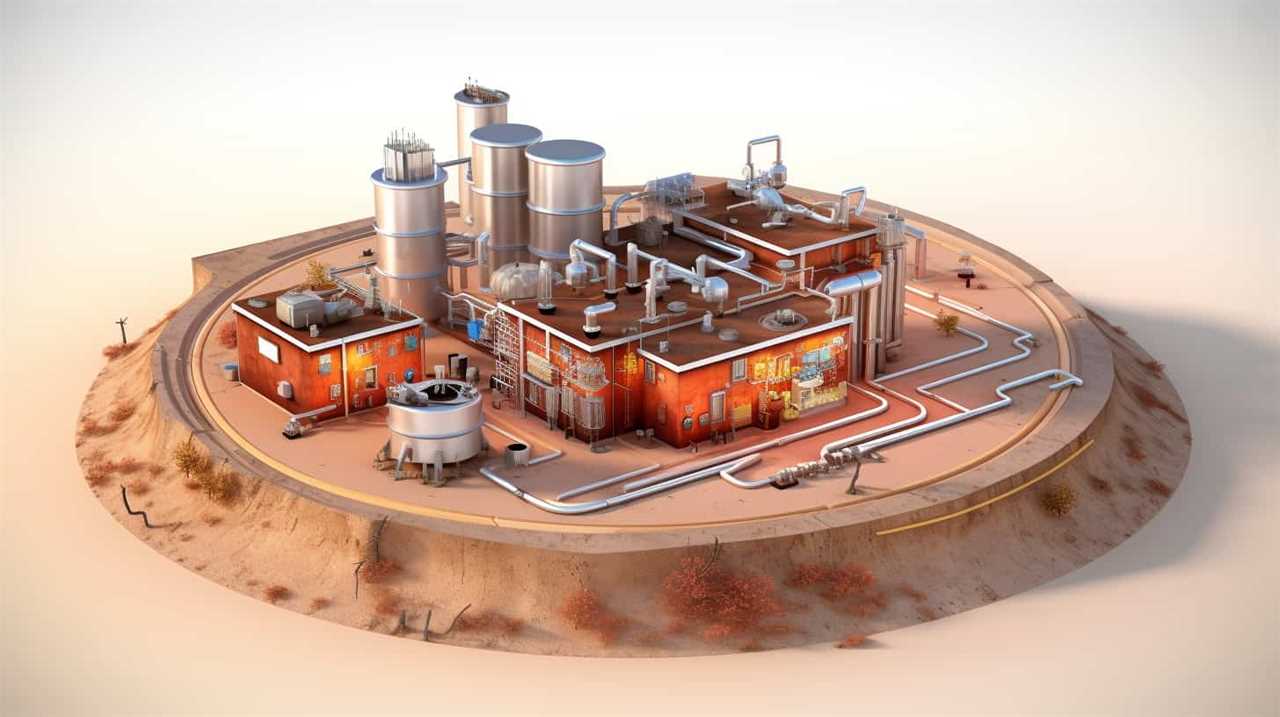
Over time, these filters can become clogged and lose their efficiency, impacting the heat pump’s performance and the air quality inside the premises. To ensure effective air filter maintenance, it’s essential to establish a regular cleaning and replacement schedule.
The frequency of air filter replacement depends on various factors, such as the type of filter, the quality of the air in the surrounding environment, and the usage of the heat pump. Generally, it’s recommended to replace air filters every three to six months. However, it’s important to inspect the filters regularly and adjust the replacement frequency accordingly.
Lubricating Moving Parts
When it comes to maintaining commercial property heat pumps, proper lubrication techniques are essential. Lubricating the moving parts helps to reduce friction and wear, ensuring smooth operation and extending the lifespan of the equipment.
It’s important to follow the manufacturer’s guidelines for lubrication frequency to ensure optimal performance and prevent any potential issues.
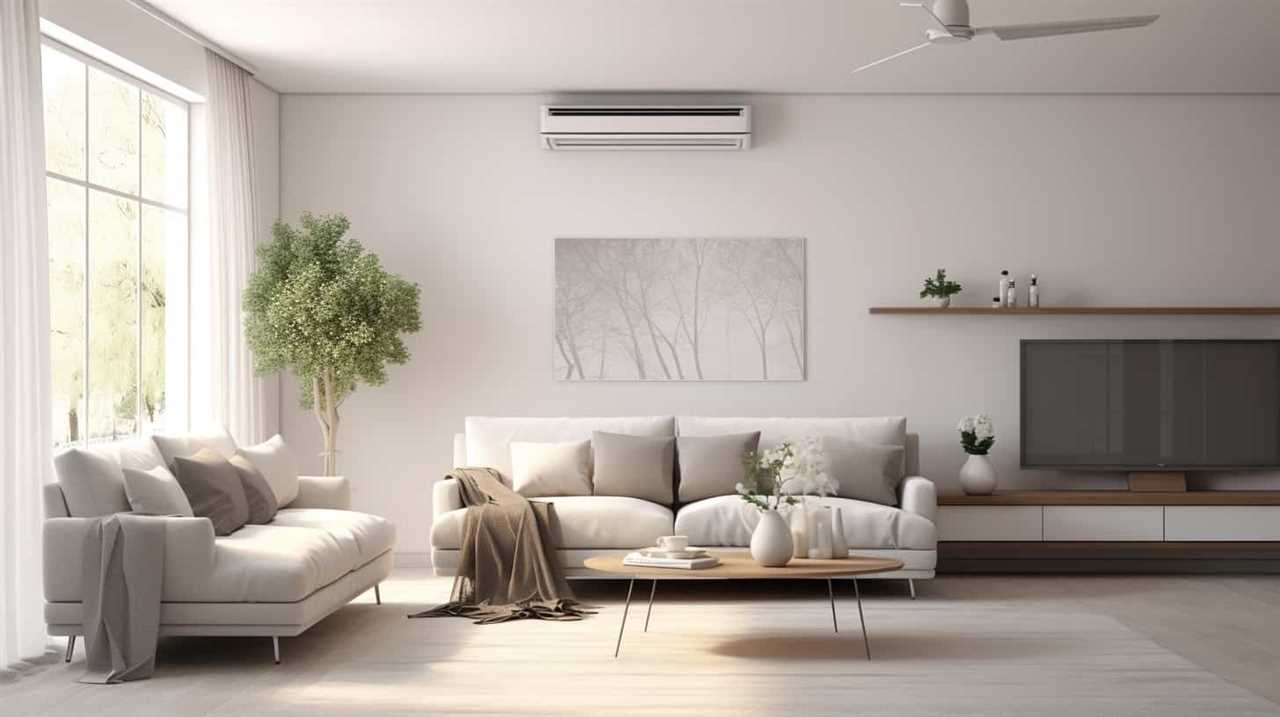
Proper Lubrication Techniques
We should always ensure that we properly lubricate the moving parts of our commercial property heat pumps. Proper lubrication is essential for the smooth operation and longevity of the heat pump system. Here are some important techniques to follow for effective lubrication:
-
Use the correct lubricant: Different parts of the heat pump require specific types of lubricants. Refer to the manufacturer’s guidelines to determine the appropriate lubricant for each component.
-
Apply the lubricant evenly: Ensure that the lubricant is distributed evenly across all moving parts. This helps to reduce friction and wear, allowing the heat pump to operate efficiently.
-
Regularly monitor lubrication levels: Check the lubrication levels regularly and top up as necessary. Insufficient lubrication can lead to increased friction, heat generation, and potential damage to the heat pump.
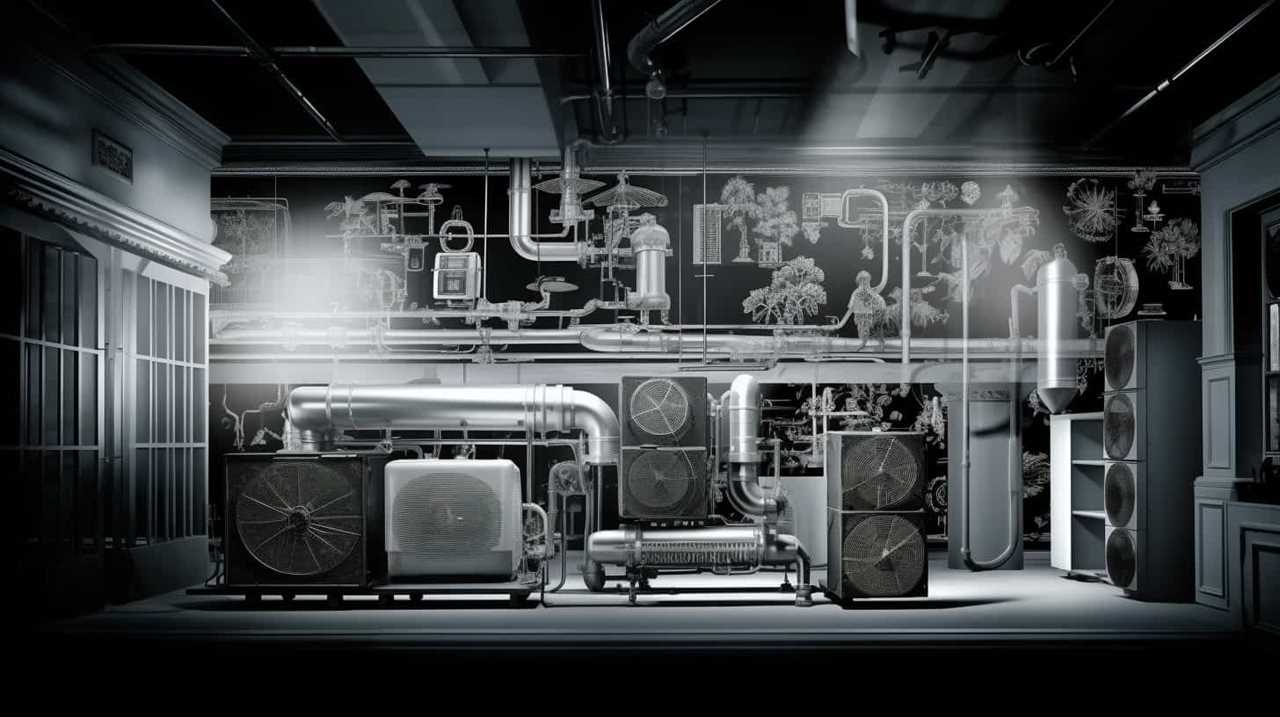
By following these lubrication techniques, we can maximize the performance and lifespan of our commercial property heat pumps.
Now, let’s explore the benefits of proper lubrication.
Benefits of Lubrication
The proper lubrication of moving parts in our commercial property heat pumps offers numerous benefits for their performance and longevity. Regular lubrication ensures smooth operation and reduces friction between the moving components, which in turn minimizes wear and tear. This helps to extend the lifespan of the heat pump, reducing the need for frequent repairs and replacements.
Additionally, lubrication enhances the overall efficiency of the system by reducing energy consumption. Well-lubricated parts operate more efficiently, resulting in lower energy costs and improved performance. Furthermore, proper lubrication helps to prevent overheating and excessive noise by reducing friction-induced heat and vibrations.

To achieve these benefits, it’s crucial to follow recommended lubrication techniques and adhere to the specified lubrication frequency. Regular maintenance checks should include inspecting and lubricating all moving parts to ensure optimal performance and maximize the lifespan of the heat pump.
Frequency of Lubrication
To ensure optimal performance, we recommend lubricating the moving parts of our commercial property heat pumps at regular intervals. Proper lubrication frequency is essential for maintaining the efficiency and longevity of the equipment.
Here are some lubrication best practices to follow:
-
Follow the manufacturer’s recommendations: Different heat pumps may require different lubrication intervals, so it’s crucial to consult the manufacturer’s guidelines for specific instructions.
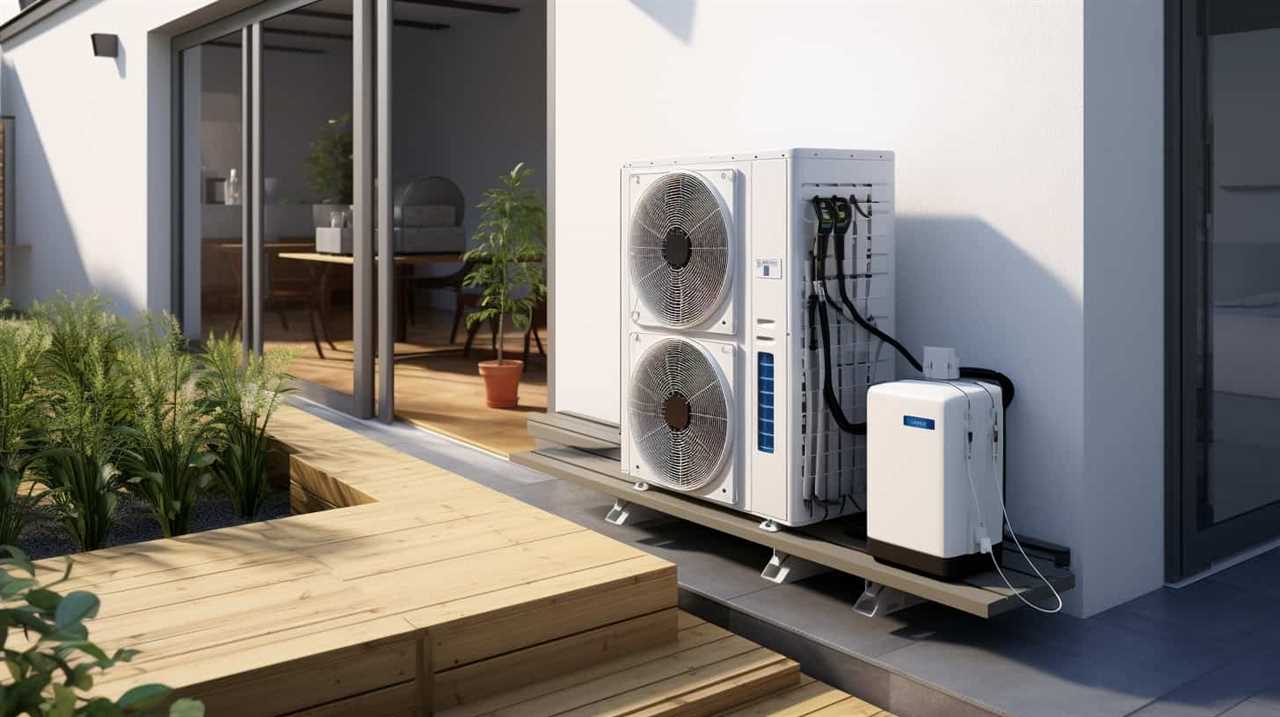
-
Regularly inspect lubrication levels: Check the lubrication levels of the heat pump’s moving parts and replenish as necessary. This will prevent excessive wear and tear and ensure smooth operation.
-
Use high-quality lubricants: Select lubricants that are specifically designed for heat pump applications. These lubricants should have the right viscosity and be able to withstand high temperatures and pressures.
By adhering to these lubrication best practices, you can optimize the performance and extend the lifespan of your commercial property heat pumps.
Now, let’s move on to the next maintenance task: inspecting and cleaning coils.
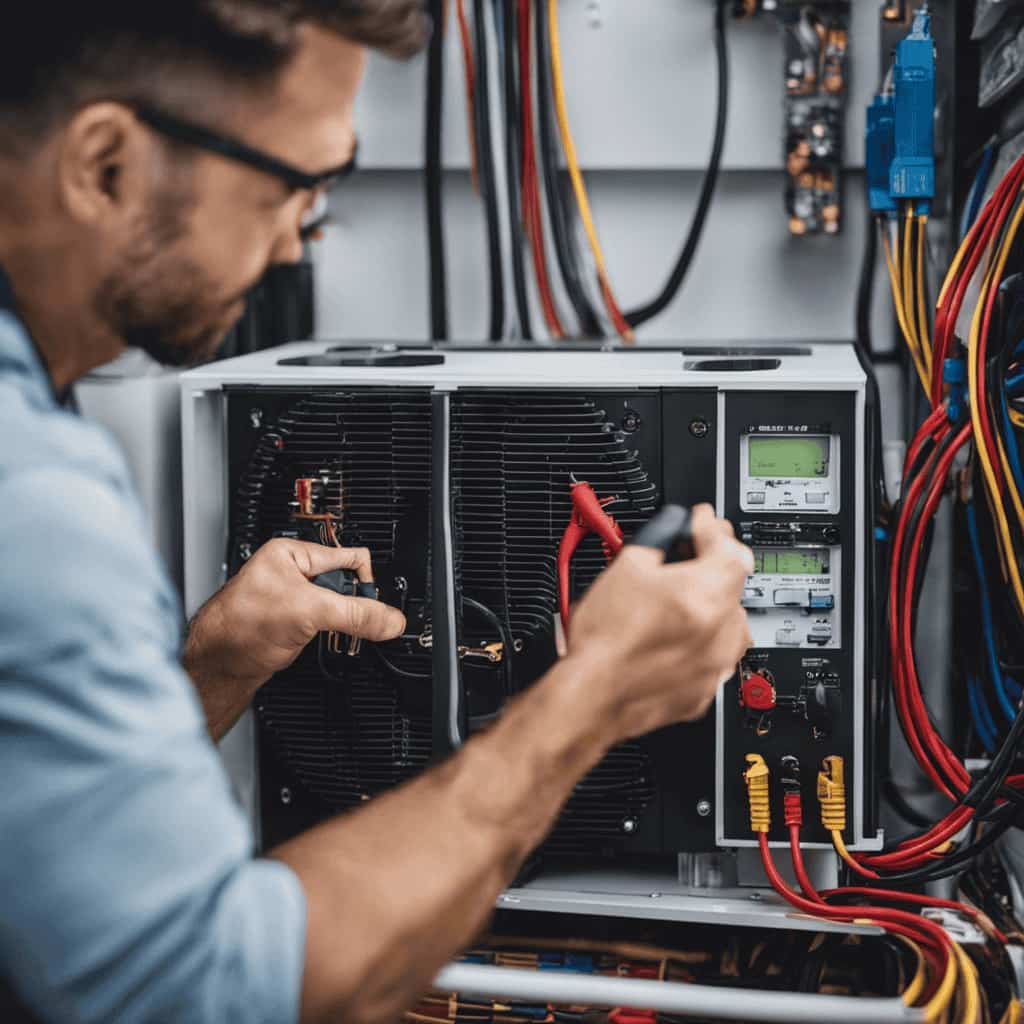
Inspecting and Cleaning Coils
When it comes to maintaining commercial property heat pumps, inspecting and cleaning the coils is of utmost importance. The coils play a crucial role in the heat transfer process, and any dirt or debris accumulation can hinder their efficiency.
To ensure optimal performance, it’s essential to use proper cleaning techniques to remove dirt, dust, and other contaminants from the coils, such as brushing, vacuuming, or using specialized coil cleaning solutions.
Coil Maintenance Importance
Inspecting and cleaning coils is essential for maintaining the optimal performance of our commercial property heat pumps. Proper coil maintenance techniques play a crucial role in preventing coil damage and ensuring the efficient operation of the heat pump system.
Here are three key reasons why inspecting and cleaning coils is of utmost importance:
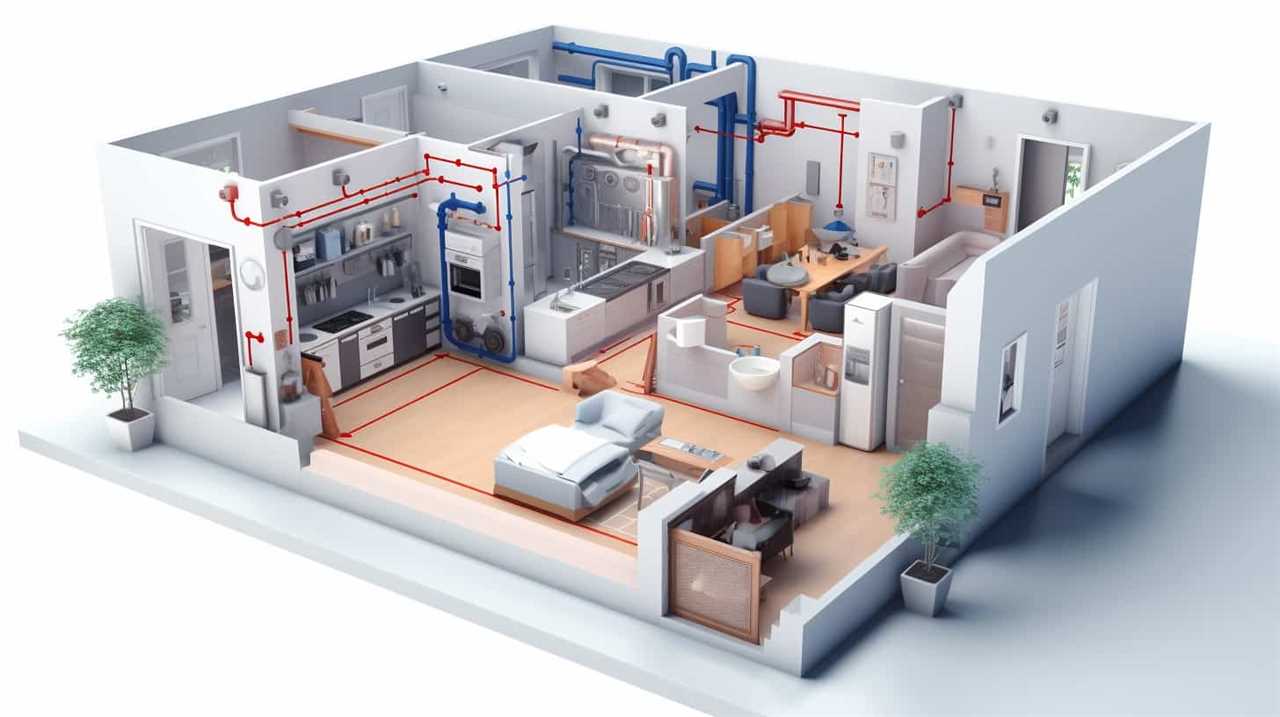
-
Improved Heat Transfer: Regularly inspecting and cleaning the coils helps to remove dirt, debris, and other contaminants that can hinder heat transfer. This ensures that the heat pump operates at maximum efficiency, reducing energy consumption and optimizing performance.
-
Enhanced Airflow: Clean coils allow for better airflow, preventing issues like reduced airflow, decreased cooling or heating capacity, and even system failure. Regular cleaning removes dust and dirt buildup, allowing air to flow freely through the coils.
-
Extended System Lifespan: By regularly inspecting and cleaning coils, we can prevent coil damage caused by corrosion, mold growth, or blockages. This helps to extend the lifespan of the heat pump system, reducing the need for costly repairs or replacements.
Investing time and effort into proper coil maintenance is essential for keeping our commercial property heat pumps running smoothly and efficiently.
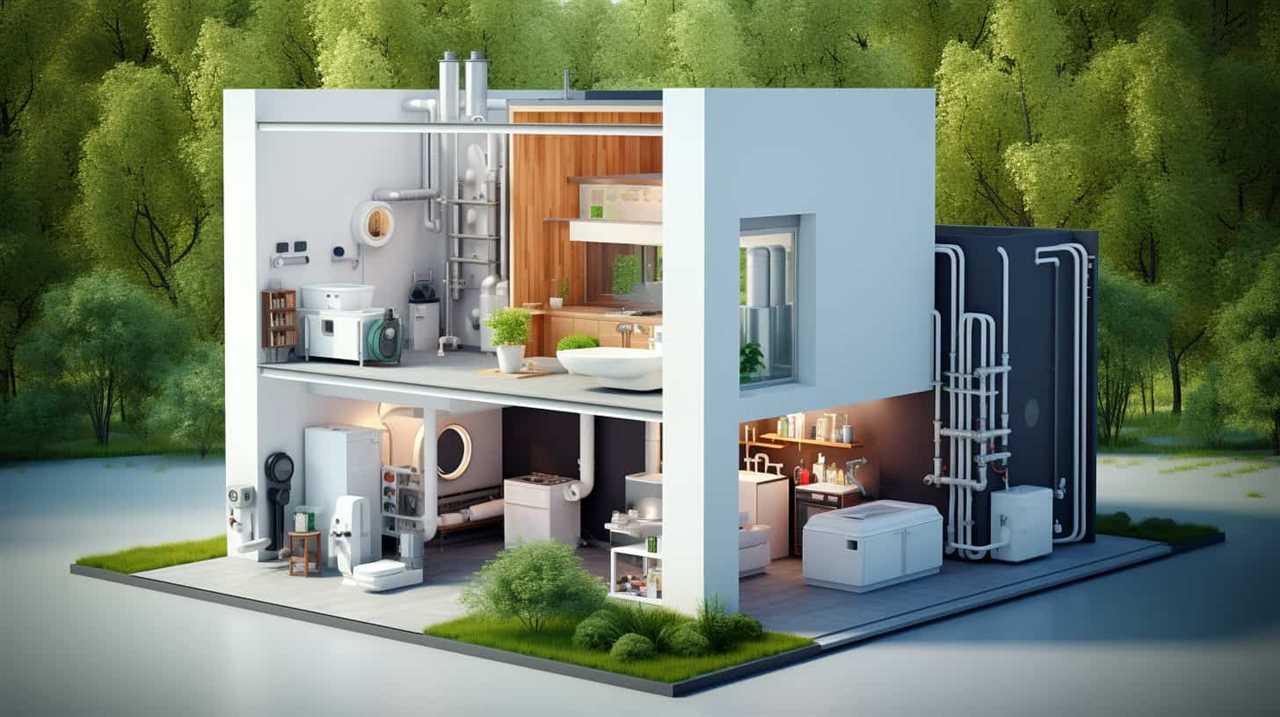
Cleaning Techniques for Coils
Our recommended cleaning techniques for maintaining the coils of our commercial property heat pumps include:
- Using gentle cleaning solutions and soft brushes.
- Regular cleaning of the coils is crucial for efficient heat pump operation and to prevent potential issues.
- When inspecting the coils, it’s important to check for any signs of dirt, dust, or debris accumulation.
- If any buildup is found, it should be carefully removed using a soft brush or a low-pressure air stream.
For more thorough cleaning, we recommend:
- Using coil cleaning products specifically designed for this purpose.
- These products are formulated to effectively remove dirt and grime without causing damage to the coils.
- It’s important to follow the manufacturer’s instructions and safety guidelines when using these recommended coil cleaning products.
Regular maintenance and cleaning using appropriate coil cleaning methods will ensure:
- Optimal performance and longevity of the heat pumps in your commercial property.
Testing and Calibrating Thermostat
Let’s begin by checking the accuracy of the thermostat and making necessary adjustments. A malfunctioning thermostat can lead to inefficient heating and cooling, resulting in discomfort and increased energy costs. To ensure proper functioning, follow these steps:

-
Check the thermostat display: Verify that the temperature displayed matches the actual room temperature. If there’s a discrepancy, recalibrate the thermostat following the manufacturer’s instructions.
-
Test thermostat responsiveness: Adjust the temperature settings and observe if the system responds accordingly. If there’s a delay or no response, it may indicate a faulty thermostat that requires replacement.
-
Verify programming settings: Review the thermostat programming to ensure it’s correctly set for different time periods. Incorrect programming can lead to inconsistent temperatures and wasted energy.
Frequently Asked Questions
How Often Should I Schedule Maintenance for My Commercial Property Heat Pump?
We recommend scheduling maintenance for your commercial property heat pump every year. This ensures optimal performance and extends the lifespan of the unit. On average, a commercial property heat pump can last around 15-20 years.

What Are the Signs That My Heat Pump Needs Maintenance?
Regular maintenance is essential for commercial property heat pumps. Signs indicating the need for maintenance include reduced airflow, unusual noises, and inconsistent temperature control. Addressing these common issues promptly ensures optimal performance and longevity of your heat pump system.
Can I Perform Maintenance on My Heat Pump Myself, or Should I Hire a Professional?
DIY heat pump maintenance has its perks, but hiring a professional offers assurance. Weigh the pros and cons. For precision and detail-oriented service, professional maintenance ensures optimal performance and extends the lifespan of commercial property heat pumps.
How Long Does a Typical Maintenance Session for a Heat Pump Take?
On average, a typical maintenance session for a heat pump takes around 1-2 hours. Regular maintenance is essential as it ensures optimal performance, extends the lifespan of the unit, and helps prevent costly repairs in the future.
Are There Any Specific Safety Precautions I Should Take When Inspecting and Cleaning the Coils of My Heat Pump?
When inspecting and cleaning the coils of our heat pump, we take specific safety precautions. We follow industry guidelines to protect ourselves and ensure the proper functioning of the equipment. Our cleaning techniques are thorough and effective.
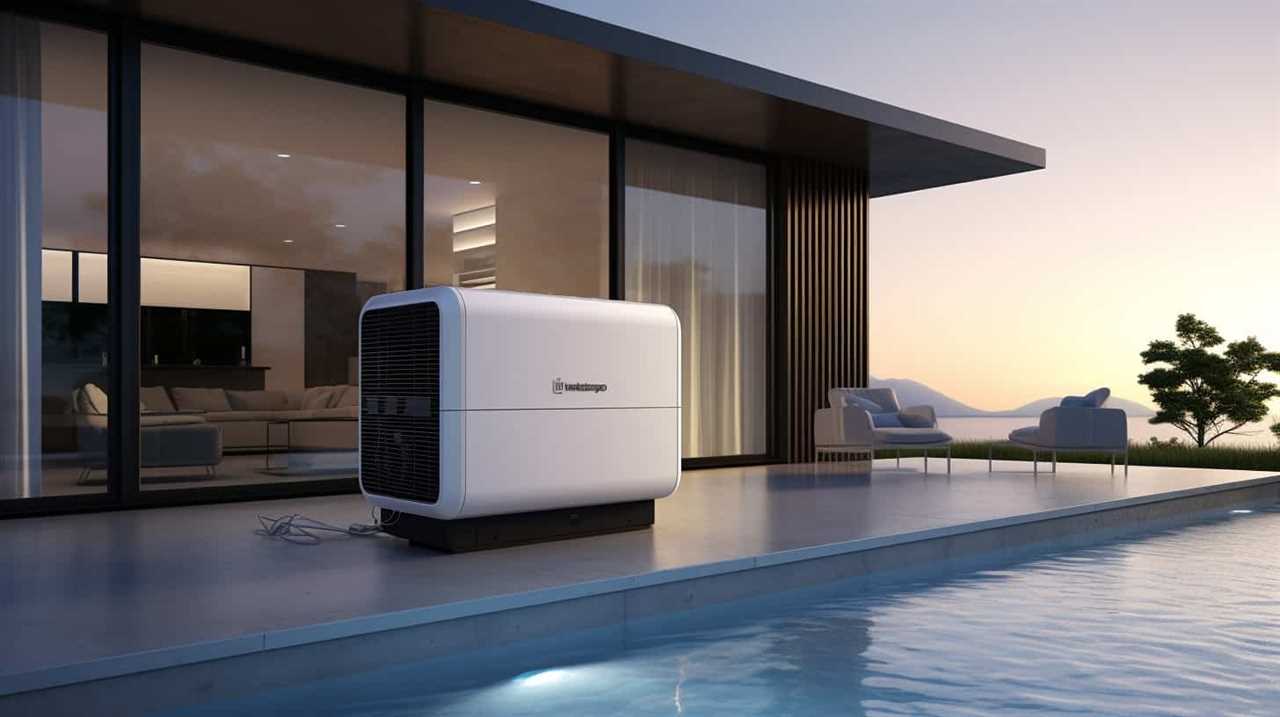
Conclusion
In conclusion, regular maintenance is crucial for ensuring the optimal performance and longevity of commercial property heat pumps.
By regularly cleaning and inspecting the heat pump, checking and replacing air filters, lubricating moving parts, and inspecting and cleaning coils, you can prevent costly breakdowns and maintain efficient operation.
Remember, a well-maintained heat pump is like a well-oiled machine, keeping your property warm and comfortable all year round.


